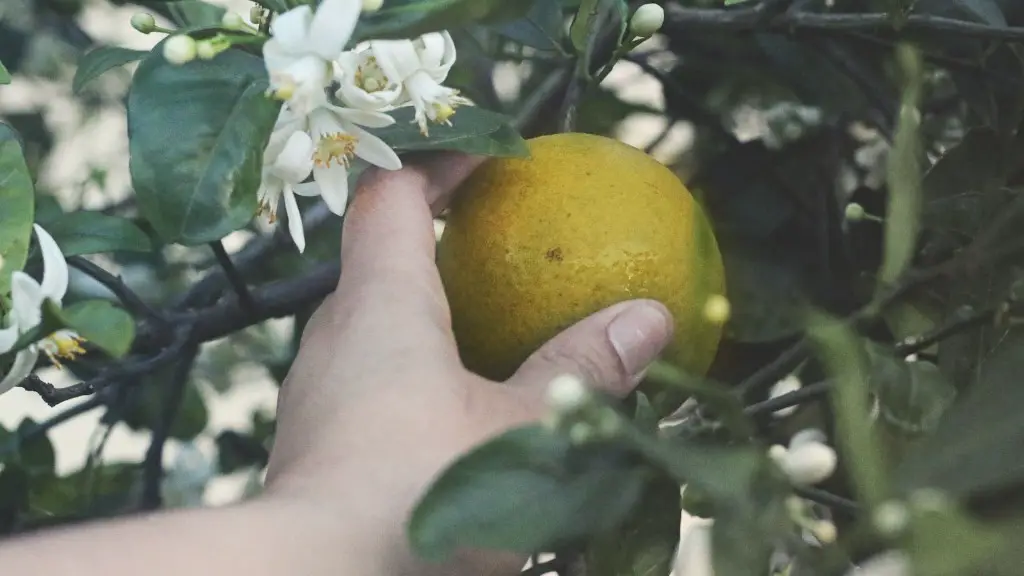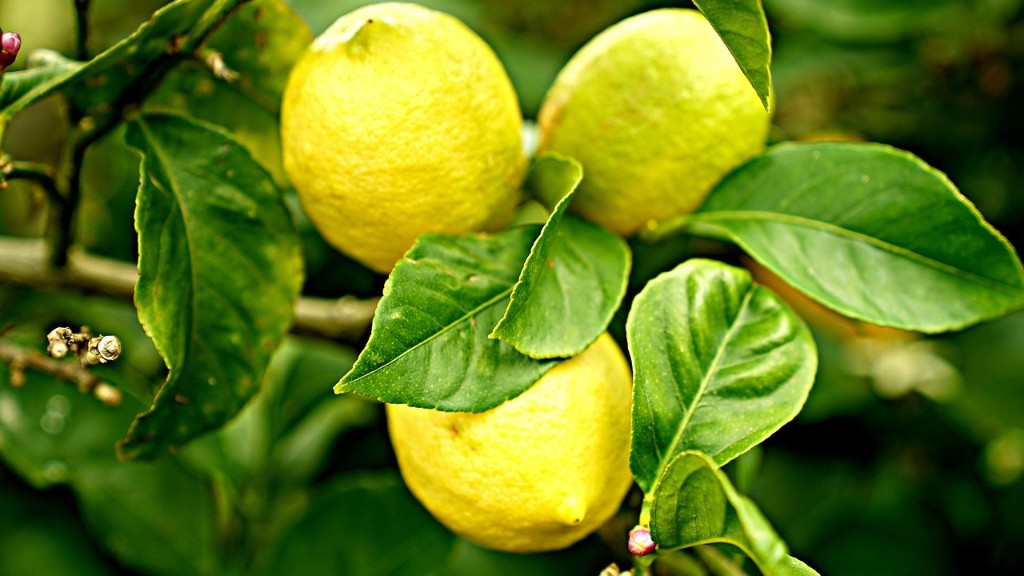Dwarf lemon trees can be quite popular for those enthusiasts who want to grow their own lemons but may not have the space either outdoors or indoors for a full size lemon tree. The answer to the question, “Can you grow a dwarf lemon tree in a pot?” is yes. While dwarf lemon trees may not reach the same size as their full-sized counterparts, they do still produce edible lemons
When it comes to potting a dwarf lemon tree, one needs to consider a few things. Firstly, you’ll need a pot that’s large enough for the roots of the lemon tree to fit with room to grow. Ideally, a pot should be at least 10-12 inches in diameter and 18-20 inches deep. It’s important to use a pot with drainage holes at the bottom to make sure the soil doesn’t become overly waterlogged and your lemon tree doesn’t suffer from root rot.
In addition to choosing the right pot, one needs to consider the type of soil as well. You want to use a well-balanced soil mix that includes a blend of organic matter and minerals. This can help provide the nutrition and moisture the lemon tree needs to survive. Additionally, make sure to use a nutritious fertilizer at least twice a year to ensure your lemon tree continues to grow and bear fruit.
Finally, it’s important to consider the location for your dwarf lemon tree. Make sure to place it somewhere where it will get at least 5-6 hours of direct sunlight each day. Dwarf lemon trees do not tolerate temperatures below 30ºF so try to keep it away from areas with strong winds and drafts. By keeping up with these guidelines, you should have a successful dwarf lemon tree.
Requirements
Caring for a dwarf lemon tree requires certain conditions to thrive. First off, regular watering is important, especially during the summer when the plants are actively growing. Water your tree bimonthly, making sure to moisten the soil but not soaking it. In the winter, reduce the watering to once a month.
In terms of fertilizing, use a balanced fertilization product and perform fertilization twice a year, once during summer and another one in the fall. It is important to keep in mind that it’s better to place the fertilizer further away from the stem, to avoid damaging the roots of your plant.
Lastly, you should prune your dwarf lemon tree twice a year, in late spring and winter. Pruning will help ensure the tree stays healthy and produces more fruit. When pruning, make sure to follow the shape of the tree, removing any deadwood and weak branches. Additionally, a dwarf lemon tree can be susceptible to certain pests so it is important to check weekly for any signs of pests and deal with them accordingly.
Maintenance
Maintaining your dwarf lemon tree requires certain steps to ensure good growth and fruit production. For starters, your plant needs adequate sunlight. Dwarf lemon trees love sunny, warm spots, preferably south-facing. If your lemon tree isn’t getting enough light, it could stunt the growth and result in few or no lemons.
In terms of humidity levels, it’s important to maintain. The ideal range for lemon trees is 40 to 50 percent relative humidity. If your tree is getting too wet or too dry, it could suffer from fungal diseases. To help maintain the humidity levels, consider placing a humidity tray or some pebbles and water near the tree.
Furthermore, during summer, it’s important to protect the tree from excessive heat. If the temperature near your tree rises above 95°F, then you will need to protect the lemon tree from the intense heat. Consider providing shade with a shade cloth or moving the pot into a shaded spot.
Lastly, as your dwarf lemon tree is grown indoors, consider keeping it away from insect infestations. If you detect any infestation, deal with it as soon as possible to protect the health of your lemon tree.
Care Tips
Taking care of your dwarf lemon tree doesn’t have to be overly complicated. To ensure good growth, consider watering regularly, positioning it in the right spot, and setting the right humidity levels. Additionally, don’t be afraid to prune, fertilize, and protect from excessive heat. With these tips in mind, you can ensure a healthy and successful lemon tree.
When it comes to fertilization, it’s better to use a slow-release fertilizer. The most beneficial fertilizer for lemon trees contains nitrogen, phosphorus and calcium. Apply the fertilizer when the tree is in an active growth stage; usually during summer and late winter. Additionally, consider composting around your tree periodically throughout the year.
In terms of water, lemon trees can be quite thirsty. When watering, make sure the soil is moist throughout but not too soggy. Consider investing in a moisture meter to help make sure you are providing the right amount of water for your plant. Additionally, it’s important to check for pests regularly and if any are spotted, deal with them as soon as possible.
Harvesting
Dwarf lemon trees can produce viable edible fruit. When the fruit is ready for harvest, it will look yellow just like a regular lemon. Once you notice the fruit turning yellowish, testing it by gently squeezing it is advised. If the fruit feels ripe, then it’s ready to be harvested. Once harvested, consider storing the lemons at room temperature until they are ready to be used.
Additionally, due to their size, dwarf lemon trees are easier to net or cover them with a cloth bag to prevent pests from eating the fruit. As your lemon tree grows, consider thinning it out in the summer. This will help ensure the tree doesn’t become overburdened by the fruit, resulting in a weakened tree and less productive yields.
In terms of conservation, one way to extend the lifespan of your lemon tree is to repot it periodically. The goal is for the tree to be “rootbound” in the pot, meaning the pot and the root system are in balance. On average, you can repot a healthy lemon tree every two years, upgrading it to a larger pot.
Conclusion
Growing a dwarf lemon tree in a pot can be quite a rewarding experience. When it comes to potting a dwarf lemon tree, one needs to consider the size of the pot needed, the type of soil to use as well as the location for the tree. Caring for your tree requires certain steps such as regular watering, fertilizing and pruning. It is also important to keep the humidity levels regular, protect it from excessive heat, and check for insect infestation. Lastly, your tree should be ready to harvest when the fruits are yellowish and considered ripe. With the right care and attention your lemon tree should provide you with years of delicious lemons.

